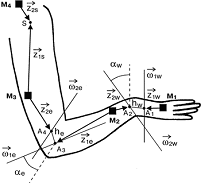Work package 5: Diagnosing knapping skill
Elementary gesture involved in human tool use: the role of expertise
Dr Blandine Bril, Ecole des Hautes Etudes en Sciences Sociales
Dr Robert Rein, Groupe de Recherche Apprentissage et Contexte, Ecole des Hautes Etudes en Sciences Sociales ![]()
Dr Tetsushi Nonaka, Ecole des Hautes Etudes en Sciences Sociales ![]()
Dr Francis Wenban-Smith, Dept of Archaeology, University of Southampton
Dr Lena Biryukova
Dr Gilles Dietrich
Start 01/ 10/2006 End 30/09/2009

Objective
To understand elementary gestures involved in human tool production and use by studying adaptation of the movement to modifications of the dynamic of the tools (hammer) in striking movements.
Activities
Knapping experiments with modern experts and beginners, in order to analyse how a stroke is produced by the hammer-arm moving system. The focus is on the adaptive capacity of knappers depending on their level of dexterity.
Analysis of the capacity of professional craftsmen of different levels of expertise to adapt to different properties of the tool (hammer of different weight and length of the handle).
Analysis of the role of body segment parameters in joint coordination to achieve task demands.
Related publications
L. Biryukova and B. Bril (under revision) Goal oriented action. From function to movement: the case of stone knapping in India. Motor Control.

 Prehistoric action grammar
Prehistoric action grammar  Diagnosing knapping skill
Diagnosing knapping skill  Understanding action recognition
Understanding action recognition  Action learning in macaques
Action learning in macaques  Neuroimaging of human tool use
Neuroimaging of human tool use  Vocal tract reconstructions
Vocal tract reconstructions  Neanderthal speech modelling
Neanderthal speech modelling  Primate cranial nerves
Primate cranial nerves